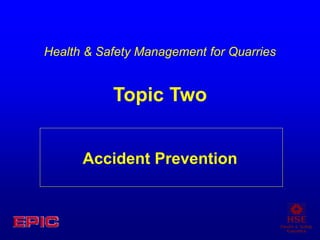This document discusses accident prevention in quarries. It outlines the difference between reactive and proactive accident prevention approaches. Various accident prevention measures are described, including operating procedures, safe systems of work, permits to work, training, and use of personal protective equipment. The hierarchy of control measures is also defined, with engineering and collective controls prioritized over reliance on personal protective equipment.


















